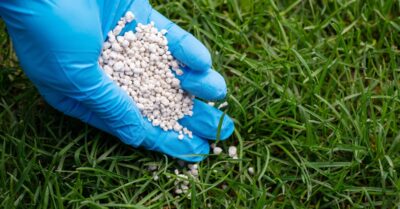Maintaining and upgrading the exterior of your home is an essential part of homeownership. The exterior of your home is more than just the face it presents to the world; it’s a shield against the elements, a barrier that protects the structure and integrity of your entire home. Upgrades to your home’s exterior can boost its curb appeal, increase its value, and provide vital protection against weather and wear.
As homes age, certain signs emerge, indicating that it’s time to consider upgrading the exterior. From weather damage to natural wear and tear, these indicators should not be ignored. Addressing them on time can prevent more significant problems down the line and ensure your home remains a safe, comfortable, and aesthetically pleasing space.
1. Roof Deterioration: Protecting the Top
The roof is one of the most crucial components of your home’s exterior. It bears the brunt of environmental elements, from scorching sun to heavy rains and snow. Indicators of a deteriorating roof include missing, curling, or cracked shingles, leaks, and visible sagging. These signs should not be taken lightly, as a compromised roof can lead to severe structural and interior damage.
Ignoring roof problems can lead to water damage, which in turn can cause mould growth and rot. These issues not only affect the structural integrity of your home but can also have health implications for its inhabitants. A damaged roof also compromises the insulation of your home, leading to higher energy bills. Upgrading your roof when these signs appear is essential for protecting your home and maintaining its value.
2. Worn or Damaged Siding
One of the most glaring signs that your home exterior needs an upgrade is when the siding starts showing signs of wear or damage. It might be time to reach out to a reliable siding company when you notice issues with your siding. Siding, after all, is not only about the visual appeal of your home; it plays a critical role in its protection.
Common signs of siding damage include cracking, warping, or fading colour. Cracks can allow moisture to seep in, leading to mould growth and structural damage. Warping might indicate underlying problems, such as water infiltration or poor installation. Fading colour not only detracts from the appearance of your home but can also signify the material’s weakening and ageing. Neglected siding can compromise the insulation of your home, leading to increased heating and cooling costs. Upgrading your siding is not just an aesthetic improvement; it’s a necessary step in maintaining the health and longevity of your home.
3. Fading or Peeling Paint
The condition of your home’s exterior paint is not only a matter of aesthetic appeal; it’s a protective layer that shields the material underneath from moisture and sun damage. When paint starts to peel, blister, or fade, it’s a clear sign that your home exterior needs attention. Peeling or blistering paint can expose the underlying material to the elements, leading to deterioration and damage.
Repainting your home’s exterior is more than a cosmetic upgrade. A fresh coat of paint can seal out moisture, prevent wood rot, and protect against insect infestations. Moreover, paint acts as a first line of defence against sun damage, which can degrade the material underneath over time. Choosing high-quality paint and proper application techniques can extend the life of your home’s exterior, ensuring it continues to look great and remains structurally sound for years to come.
4. Inefficient Windows
The windows play a pivotal role in the aesthetics, energy efficiency, and comfort of your home. When windows start showing signs of inefficiency, it’s a clear indicator that an upgrade is necessary. One of the first signs to look out for is drafts. Suppose you feel a breeze when you’re near your windows, even when they’re closed. In that case, it’s a sign that they are no longer sealing properly, which can lead to significant energy loss, making your heating and cooling systems work harder and increasing your utility bills.
Another sign is difficulty in opening, closing, or locking the windows, and this not only poses a security risk but also affects the functionality and ease of use. Condensation between panes is another common issue, indicating a failure in the window’s insulation. Upgrading to new, energy-efficient windows can resolve these issues. Modern windows offer better insulation, reducing energy costs and improving the comfort of your indoor environment. Additionally, they can enhance the curb appeal of your home, making it look more modern and well-maintained.
5. Outdated or Damaged Gutters
Gutters are an often overlooked but essential component of your home’s exterior. They play a vital role in directing rainwater away from your home’s foundation and preventing landscaping erosion. When gutters become outdated or damaged, they can cause a host of problems. Common signs of gutter issues include sagging, rust, leaks, or gutters pulling away from the house. These issues can lead to water damage to your siding, roof, and even the foundation of your home.
Upgrading your gutters is a practical step in protecting your home from water-related issues. New gutters can effectively channel water away from your home, reducing the risk of foundation damage, soil erosion, and water infiltration into basements or crawl spaces. Additionally, modern gutter systems come in various styles and colours, allowing you to enhance the aesthetic appeal of your home while ensuring its protection.
6. Cracked or Uneven Driveway / Walkways
The condition of your driveway and walkways is not only important for curb appeal but also for safety. Cracks, uneven surfaces, or areas where weeds are growing through can be tripping hazards and detract from the overall look of your home. These issues can be caused by natural settling, weathering, or tree roots.
Repairing or replacing your driveway and walkways is a significant upgrade that can transform the look of your home’s exterior. It’s also an opportunity to improve safety and accessibility. You can choose materials that complement your home’s style and are durable enough to withstand the local climate. A well-maintained driveway and walkways enhance the first impression of your home and can increase its resale value.
Conclusion
Upgrading your home’s exterior is an investment in its value, safety, and aesthetic appeal. Whether it’s replacing worn siding, repairing a deteriorating roof, refreshing faded paint, installing efficient windows, updating gutters, or repairing driveways and walkways, each upgrade plays a crucial role in maintaining the integrity and beauty of your home. Regularly assessing these elements and addressing issues will ensure that your home remains a source of pride and comfort for years to come.










